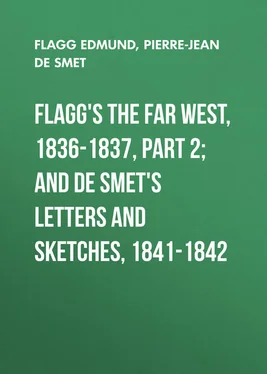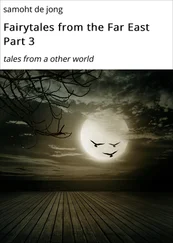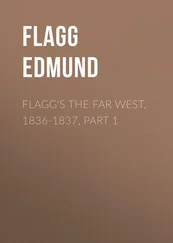Edmund Flagg - Flagg's The Far West, 1836-1837, part 2; and De Smet's Letters and Sketches, 1841-1842
Здесь есть возможность читать онлайн «Edmund Flagg - Flagg's The Far West, 1836-1837, part 2; and De Smet's Letters and Sketches, 1841-1842» — ознакомительный отрывок электронной книги совершенно бесплатно, а после прочтения отрывка купить полную версию. В некоторых случаях можно слушать аудио, скачать через торрент в формате fb2 и присутствует краткое содержание. Издательство: Иностранный паблик, Жанр: foreign_antique, foreign_prose, на английском языке. Описание произведения, (предисловие) а так же отзывы посетителей доступны на портале библиотеки ЛибКат.
- Название:Flagg's The Far West, 1836-1837, part 2; and De Smet's Letters and Sketches, 1841-1842
- Автор:
- Издательство:Иностранный паблик
- Жанр:
- Год:неизвестен
- ISBN:нет данных
- Рейтинг книги:4 / 5. Голосов: 1
-
Избранное:Добавить в избранное
- Отзывы:
-
Ваша оценка:
- 80
- 1
- 2
- 3
- 4
- 5
Flagg's The Far West, 1836-1837, part 2; and De Smet's Letters and Sketches, 1841-1842: краткое содержание, описание и аннотация
Предлагаем к чтению аннотацию, описание, краткое содержание или предисловие (зависит от того, что написал сам автор книги «Flagg's The Far West, 1836-1837, part 2; and De Smet's Letters and Sketches, 1841-1842»). Если вы не нашли необходимую информацию о книге — напишите в комментариях, мы постараемся отыскать её.
Flagg's The Far West, 1836-1837, part 2; and De Smet's Letters and Sketches, 1841-1842 — читать онлайн ознакомительный отрывок
Ниже представлен текст книги, разбитый по страницам. Система сохранения места последней прочитанной страницы, позволяет с удобством читать онлайн бесплатно книгу «Flagg's The Far West, 1836-1837, part 2; and De Smet's Letters and Sketches, 1841-1842», без необходимости каждый раз заново искать на чём Вы остановились. Поставьте закладку, и сможете в любой момент перейти на страницу, на которой закончили чтение.
Интервал:
Закладка:
20
" Petits paysans. " – Flagg.
21
The battle of Mauilla, to which Flagg is referring, was fought in October, 1540, between De Soto's men and the Mobilian Indians, near the present site of Mobile. Our author is mistaken in supposing that these Indians were the Kaskaskia. De Soto reached the Mississippi in May, 1541, and died May 21, 1542. He started on the expedition with less than seven hundred men, instead of one thousand. According to Herrera, his body was laid in a hollow live-oak log, and lowered into the Mississippi; but it seems more probable that the corpse was wrapped in mantles made heavy by a ballast of sand, and thus lowered into the water. See John G. Shea, "Ancient Florida," in Justin Winsor, Narrative and Critical History of America (Boston and New York, 1886), ii, pp. 231-283; also E. G. Bourne (ed.) Narratives of the Career of Hernando de Soto (New York, 1904). – Ed.
22
Annexed is a copy of the grant of the celebrated commons attached to the village of Kaskaskia. It is the earliest title the citizens hold to seven thousand acres of the most fertile land in the West – perhaps in the world.
"Pierre de Rigault de Vaudreuil, Governor and Edme Gatien Salmon Commissary orderer of the Province of Louisiana, seen the petition to us presented on the sixteenth day of June of this present year by the Inhabitants of the Parish of the Immaculate Conception of Kaskaskia dependence of the Illinois, tending to be confirmed in the possession of a common which they have had a long time for the pasturage of their cattle in the Point called La point de bois , which runs to the entrance of the River Kaskaskia. We, by virtue of the power to us granted by his Majesty have confirmed and do confirm to the said Inhabitants the possession of the said common on the following conditions —
"First, That the concessions heretofore granted either by the India Company either by our predecessors or by us in the prairie of Kaskaskia on the side of the point which runs to the entrance of the river, shall terminate at the land granted to a man named Cavalier , and in consequence, that all concessions that may have been made on the said point from the land of the said Cavalier forward, on the side of the entrance of the said river shall be null and void and of no effect. In consequence of which, the said Point, as it is above designated, shall remain in common without altering its nature, nevertheless, reserving to us the power whenever the case may require it, of granting the said commons to the inhabitants established and who may establish, and this, on the representations which may be made to us by the commandants and sub-delegates in the said places.
"Secondly, on the road vulgarly called the Square Line between the large and small line shall be rendered practicable and maintained for the passage of the Carts and Cattle going into the Common, and this by lack of the proprietors as well of the great as of the small line whose lands border on the roads of the Square line . And as to the places which ought to run along the side of the village from the said road of the Square line unto the river, as also the one on the side of the point running to the Mississippi and to the Kaskaskia river, they shall be made and maintained at the expense of the community, to the end that the cultivated lands be not injured by the cattle.
"Thirdly, To facilitate to the inhabitants the means of making their autumnal harvest, and prevent its being damaged by the cattle, we forbid all persons to leave their cattle range upon cultivated lands – they are, notwithstanding, permitted to graze upon their own proper lands on having them diligently watched.
"Fourthly, Willing that the wood which is on the land granted belong to the proprietors of the said lands, we forbid all persons to cut down any elsewhere than on their own lands, and as to the wood which may be found in the commons to cut down for their own use, either for building or for fire wood, and this shall be the present regulation.
"Read, published and affixed to the end that no person may be ignorant thereof. Given at New-Orleans the fourteenth day of August, 1743.
VAUDREUIL. "Salmon." – Flagg.>23
"Under the old management all the inhabitants had equal access to the commons for pasturage and fuel. By an act of the legislature passed in 1854, the citizens were authorized to elect five trustees every two years, who should exercise the charge of the commons, lease portions thereof, and apply the proceeds to church and school purposes only. The common fields were also originally owned jointly by the villagers, though each resident was assigned an individual portion. The United States commissioners, in 1809, determined the rights of each citizen, and the lots have since been held in fee simple." See Combined History of Randolph, Monroe, and Perry Counties, Illinois (Philadelphia, 1883), p. 308. – Ed.
24
For the memorial of George Morgan, upon these lands along the Mississippi River, the report of the committee to which the above had been referred, and the resolutions of Congress thereon (August 28, 29, 1788), see Laws of the United States, etc. (Bioren edition, Philadelphia, 1815), i, pp. 580-585. – Ed.
25
For an account of the extermination of the Natchez, see F. A. Michaux's Travels , in our volume iii, p. 254, note 53. – Ed.
26
Doubtless an exaggeration. – Flagg.
Comment by Ed. "From 1810 to 1820 the town (Kaskaskia) probably contained more people than at any other period of its history. A census taken at that time showed a population of seven thousand." See History of Randolph, Monroe, and Perry Counties , p. 307.
27
A monastery and accompanying college, liberally endowed from Europe, was founded at Kaskaskia by Jesuit missionaries in the first quarter of the eighteenth century. – Ed.
28
"The idea," says Adam Smith, "of the possibility of multiplying paper money to almost any extent, was the real foundation of what is called the Mississippi scheme , the most extravagant project, both of banking and stock-jobbing, that perhaps the world ever saw." – Flagg.
Comment by Ed. John Law died at Venice, March 21, 1729. Concerning his financial methods, see Émile Levasseur, Recherches historique sur le system de Law (Paris, 1854). Ample and accurate is Andrew M. Davis's A Historical Study of Law's System (Boston, 1887), reprinted from Quarterly Journal of Economics (Boston, 1887), i, pp. 289-318, 420-452.
29
Breckenridge. – Flagg.
30
For an account of the early lead-mines, see Flagg's Far West , in our volume xxvi, p. 95, note 60. – Ed.
31
For an historical sketch of Ste. Genevieve, see Cuming's Tour , in our volume iv, p. 266, note 174. – Ed.
32
The French civil law still prevails in Louisiana.
For a good monograph on the Ordinance of 1787, and the text of the same, see Jay Amos Barrett, Evolution of the Ordinance of 1787, with an Account of the earlie Plans for the Government of the Northwest Territory (New York, 1891). – Ed.
33
Under the feudal régime in France, the local or customary laws of the more important centres of population came gradually to extend their sway over larger and larger districts. With the rising importance of Paris, the coutume de Paris (common law of Paris), reformed in 1580 by order of the parliament, in time displaced all others; it breathed the national spirit. Codified, it was in a sense the forerunner of the Code Napoleon. – Ed.
Читать дальшеИнтервал:
Закладка:
Похожие книги на «Flagg's The Far West, 1836-1837, part 2; and De Smet's Letters and Sketches, 1841-1842»
Представляем Вашему вниманию похожие книги на «Flagg's The Far West, 1836-1837, part 2; and De Smet's Letters and Sketches, 1841-1842» списком для выбора. Мы отобрали схожую по названию и смыслу литературу в надежде предоставить читателям больше вариантов отыскать новые, интересные, ещё непрочитанные произведения.
Обсуждение, отзывы о книге «Flagg's The Far West, 1836-1837, part 2; and De Smet's Letters and Sketches, 1841-1842» и просто собственные мнения читателей. Оставьте ваши комментарии, напишите, что Вы думаете о произведении, его смысле или главных героях. Укажите что конкретно понравилось, а что нет, и почему Вы так считаете.












